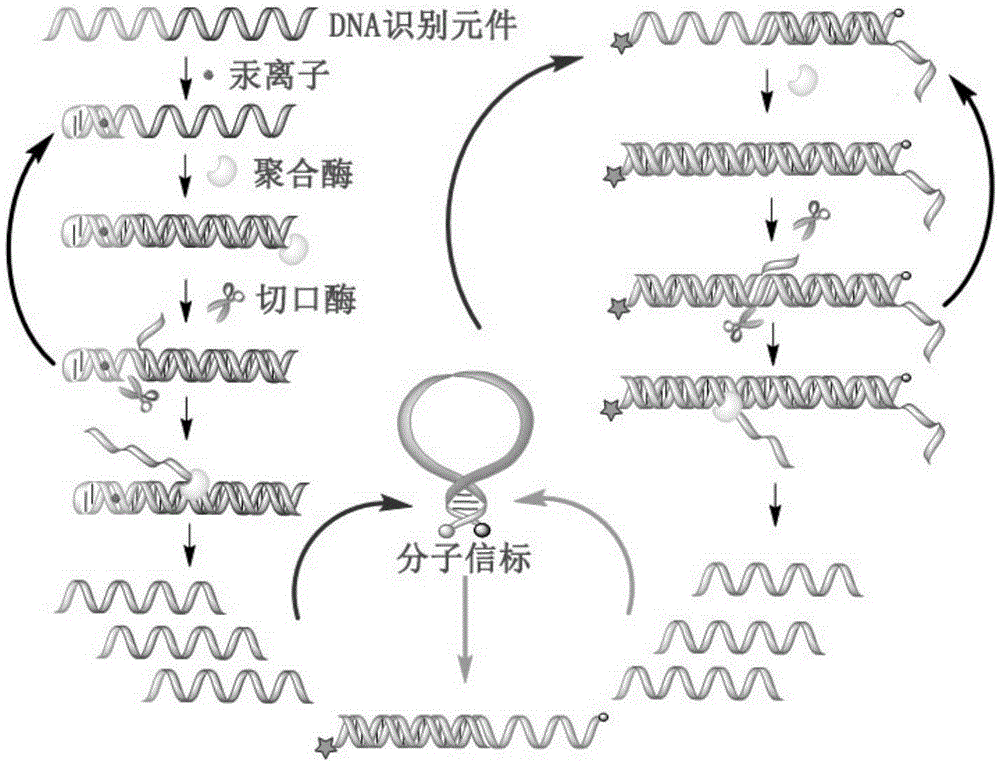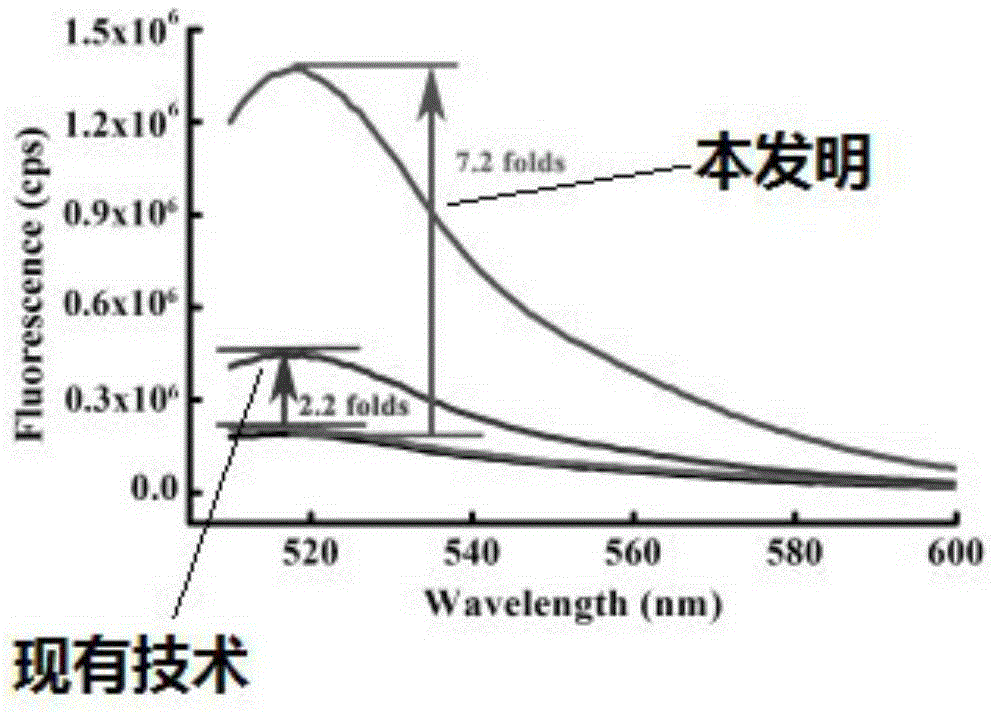Mercuric ion detection kit based on constant-temperature cascading nucleic acid amplification and detection method thereof
A mercury ion, cascade technology, applied in the biological field, can solve the problems of insufficient sensitivity, long time, complicated design, etc., and achieve the effect of improving sensitivity, wide application range and simple design.
- Summary
- Abstract
- Description
- Claims
- Application Information
AI Technical Summary
Problems solved by technology
Method used
Image
Examples
Embodiment 1
[0029] The detection kit of the present embodiment comprises the following components:
[0030] (1) A DNA recognition element containing thymine that can specifically bind mercury ions: the last base at the 3' end of DNA is thymine, and its nucleotide sequence (5' to 3'):
[0031] TGAGGCTAGAGCGAGCTGAGGCTGTAATGGAAAAAACCATTT
[0032] After binding to mercury ions, it forms a 3' end complementary through intramolecular folding, forming a stem-loop structure that can be recognized by polymerase;
[0033] (2) Amplification substrate: including dNTPs mixture;
[0034] (3) Tool enzyme: DNA polymerase and nuclease nickase with strand displacement amplification activity, the DNA polymerase is KlenowFragment, and the nuclei nickase is Nt.BbvCI; used to trigger SDA to generate SDA products;
[0035] (4) Molecular beacon probe with a stem-loop structure: its two ends are respectively labeled with a fluorescent group and a quencher group. The molecular beacon probe has a sequence that ca...
PUM
 Login to View More
Login to View More Abstract
Description
Claims
Application Information
 Login to View More
Login to View More - R&D
- Intellectual Property
- Life Sciences
- Materials
- Tech Scout
- Unparalleled Data Quality
- Higher Quality Content
- 60% Fewer Hallucinations
Browse by: Latest US Patents, China's latest patents, Technical Efficacy Thesaurus, Application Domain, Technology Topic, Popular Technical Reports.
© 2025 PatSnap. All rights reserved.Legal|Privacy policy|Modern Slavery Act Transparency Statement|Sitemap|About US| Contact US: help@patsnap.com



